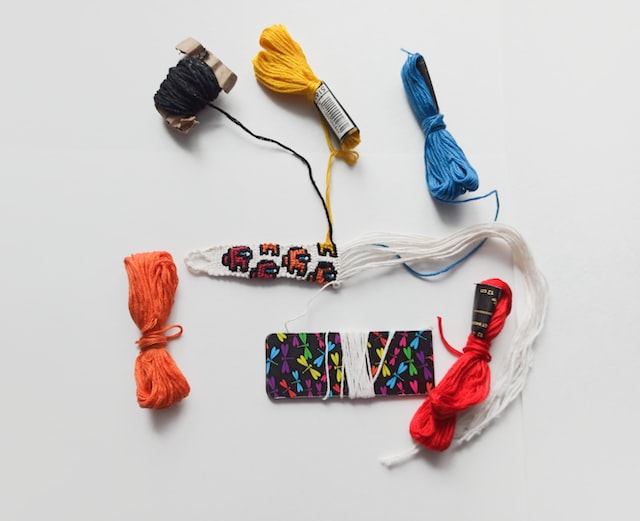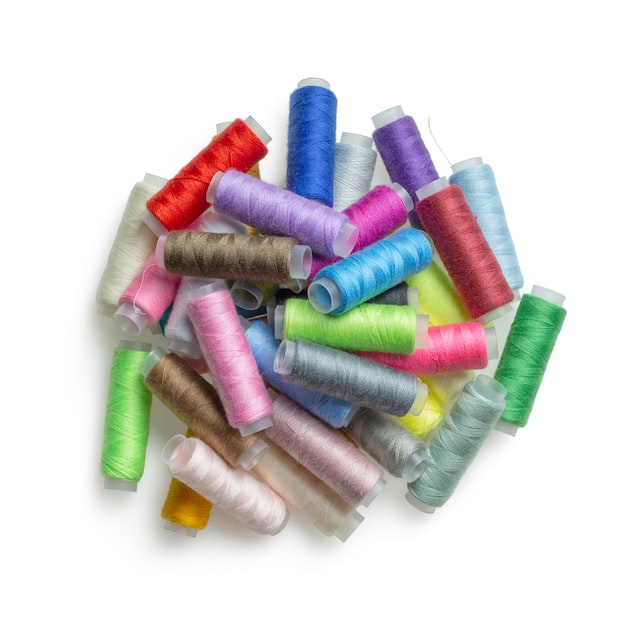Sewing machines are complex and intricate machinery, and even small issues can cause major problems. One of the most common issues is with the bobbin, which is responsible for threading the fabric with thread. If you’re having trouble getting your sewing machine to work correctly, it’s likely that the bobbin is to blame.
This article will explain the sewing machine problem with the bobbin and how to fix them so that you can start sewing again in no time!

The Different Types of Bobbins:
There are several different types of bobbins that can be used in a sewing machine. The type of bobbin you use will depend on the type of sewing machine you have as well as the type of fabric you are working with. The most common types of bobbins are:
Class 15 Bobbins:
These bobbins are the most common type and are used in most home sewing machines. They are made of plastic and have a slightly curved shape.
Class 66/67 Bobbins:
These bobbins are slightly larger than Class 15 bobbins and are often used in industrial sewing machines. They are made of metal and have a flanged shape.
Magnetic Bobbins:
These bobbins have a small magnet inside them which helps to keep the thread in place while you sew. They can be used in any type of sewing machine but are most common in industrial machines.

7 Common sewing machine problems with bobbins
1. The bobbin case is not properly threaded.
If the bobbin case is not properly threaded, the machine will not sew correctly. The needle and thread will not be able to form a proper stitch, and the fabric will not be held together correctly. This can cause skipped stitches, uneven seams, and other problems.
To fix this problem, first check that the bobbin case is properly inserted into the machine. If it is not, then unscrew the plate on the bottom of the machine and insert the case into its slot. Once it is in place, screw the plate back on and make sure that it is tight.
Next, check that the thread is properly inserted into the bobbin case. The thread should go through the tension spring and come out of the hole in the side of the case. If it does not, then loosen the tension spring slightly and try again.
Finally, check that the needle is properly threaded. The thread should go through all of the guides and come out of the needle eye from behind. If it does not, then unthread the needle and start again. Make sure to follow all of these steps carefully in order to avoid any sewing problems in future projects!
2. The bobbin is not inserted correctly.
If the bobbin is not inserted correctly, the machine will not be able to stitch correctly. There are a few things you can check to see if the bobbin is inserted correctly. First, check that the Bobbin Case is in correctly. The Bobbin Case should be inserted so that the silver line on the case is facing up. If the Bobbin Case is not inserted correctly, the bobbin will not rotate properly and will cause problems with stitching. Second, check that the bobbin itself is inserted correctly.
The bobbin should be inserted so that the winding goes clockwise when you pull on the thread. If the bobbin is not inserted correctly, it will also cause problems with stitching. Finally, make sure that there is no tension on the thread before beginning to sew. If there is tension on the thread, it will cause problems with stitching as well.

3. The needle is not properly positioned for sewing.
If the needle is not properly positioned for sewing, it can cause a number of problems. The most common problem is that the stitching will be uneven and can even come undone. This can ruin your project and cause a lot of frustration.
There are a few things you can do to ensure that the needle is properly positioned. First, make sure that the needle is inserted all the way into the needle clamp. Second, check that the needle is aligned with the presser foot. Finally, be sure to use the correct size needle for your project.

If you take these steps, you will be well on your way to ensuring that your projects turn out looking their best.
4. The machine is not properly tensioned.
If the machine is not properly tensioned, it can cause a number of problems. If the tension is too loose, the fabric may bunch up or pucker. If the tension is too tight, the fabric may stretch or break. Either way, it can ruin your project.
To avoid this, make sure to tension the machine properly before starting to sew. Check the manual for your specific machine to see what the proper tension should be. Once you’ve set the tension, test it on a scrap piece of fabric before starting on your project. That way you can be sure everything will go smoothly.
5. The stitch length is incorrect.

If the stitch length is incorrect on your sewing machine, it can cause a number of problems with your sewing. The most common problem is that the stitches will be too loose or too tight, which can cause the fabric to pucker or bunch up. If the stitch length is too long, it can also cause the thread to break more easily. You may also find that the needle starts to skip if the stitch length is incorrect.
To fix this problem, you will need to adjust the stitch length on your sewing machine. This is usually done by turning a knob or lever on the side of the machine. The exact location and method may vary depending on your machine, so consult your manual for instructions. Once you have adjusted the stitch length, sew a few test stitches on a scrap piece of fabric to make sure it is set correctly.
6. The fabric is not fed evenly into the machine.
If the fabric is not fed evenly into the machine, it can cause a number of problems. The most common problem is that the fabric will not be sewn evenly, which can cause puckering or gathering. Additionally, the fabric may not lie flat against the bed of the machine, which can cause skipped stitches or uneven stitching.

To avoid these problems, it is important to make sure that the fabric is fed evenly into the machine. This can be done by using a guide or by manually feeding the fabric into the machine. If using a guide, make sure that it is positioned correctly so that the fabric is fed evenly into the machine. If feeding the fabric manually, take care to feed it evenly so that there are no wrinkles or folds in the fabric.
7. The presser foot pressure is incorrect.
If the presser foot pressure in your sewing machine is incorrect, it can cause problems with your bobbin. The bobbin may not feed properly or may jam, causing stitch errors. To fix this, you’ll need to adjust the presser foot pressure. First, consult your sewing machine manual to find the correct setting. Then, use a screwdriver to turn the tension knob until the pressure is correct. If you’re still having problems, take your machine to a professional for help.
How to fix sewing machine problems with Bobbin?
If you’re having trouble with your sewing machine’s bobbin, there are a few things you can do to try and fix the problem. First, make sure that the bobbin is correctly inserted into the machine. If it’s not, then the machine won’t be able to sew correctly.
Next, check to see if the bobbin case is properly seated in the machine. If it’s not, then the bobbin won’t be able to rotate properly and will cause problems with your sewing. Finally, make sure that the tension on the bobbin is correct. If it’s too tight or too loose, then it can cause problems with your sewing.
Brother Sewing Machine Bobbin Case Problem

If you’re having problems with your brother’s sewing machine bobbin case, there are a few things you can check. First, make sure that the bobbin case is properly inserted into the machine. If it’s not, the machine won’t be able to sew properly. Next, check to see if the bobbin case is jammed. If it is, gently remove it and try again. Finally, make sure that the tension on the bobbin case is set correctly. If it’s too loose or too tight, the machine won’t sew properly.
Singer Sewing Machine Bobbin Case Problems
If you’re having trouble with your singer sewing machine’s bobbin case, there are a few things you can check. First, make sure that the bobbin case is properly inserted into the machine. If it’s not, the machine won’t be able to stitch properly.
Next, check to see if the tension on the bobbin case is too tight or too loose. If it’s too tight, the thread will break when you try to sew; if it’s too loose, the stitches will be uneven and might come undone. The tension should be just right so that the thread forms nice, even stitches.
If you’re still having problems with your bobbin case, take it to a sewing machine repair shop to have it checked out.

Conclusion
As shown in this article, sewing machine problems with bobbins are a common source of frustration when working with a sewing machine. Fortunately, these problems can usually be solved by troubleshooting various parts of the system and adjusting certain settings.
By understanding how your sewing machine works and being able to identify potential problem areas, you will be better equipped to diagnose any issues that come up in the future. If all else fails, always remember that you can seek professional help from an experienced seamstress or repair shop if needed!

FAQs
Q: What can I do to fix bobbin thread bunching, looping, and tangling?
A: There are a few things you can do to prevent bobbin thread bunching, looping, and tangling. Mostly it comes down to keeping your threads separated and tangle-free. Use a Bobbin Tamer or an Overlocker Tool to help keep your stitches tight and organized. And lastly, make sure you’re using the right needles for the fabric you’re working with – thicker fabrics will require a heavier-weight needle while thinner fabrics will need a thinner needle.
Q: Why is my sewing machine not catching the bobbin?
If your sewing machine is not catching the bobbin, there are a few possible reasons. First, check to make sure that the bobbin is inserted correctly. If it is not inserted correctly, the needle will not be able to pick up the thread from the bobbin. Second, check to see if the needle is properly positioned.
The needle must be in the down position when you start sewing in order for the machine to pick up the bobbin thread. Third, check to see if the tension on the bobbin case is too tight.
The tension on the bobbin case should be just tight enough so that the thread does not slip when you are sewing. If the tension is too tight, it will cause the machine to skip stitches. Finally, check to see if there is anything blocking the path of the needle. If there is anything blocking the path of the needle, it will prevent it from picking up the bobbin thread properly.

[…] take a look at your bobbin. It might be time to change it if it’s getting old or damaged. A new bobbin can make a big […]
[…] are many reasons why a bobbin thread might be birdnesting. A common one is that the thread may become entwined with other threads […]
[…] You will need a needle and thread for this project. If you are using a sewing machine, you will also need a bobbin. […]